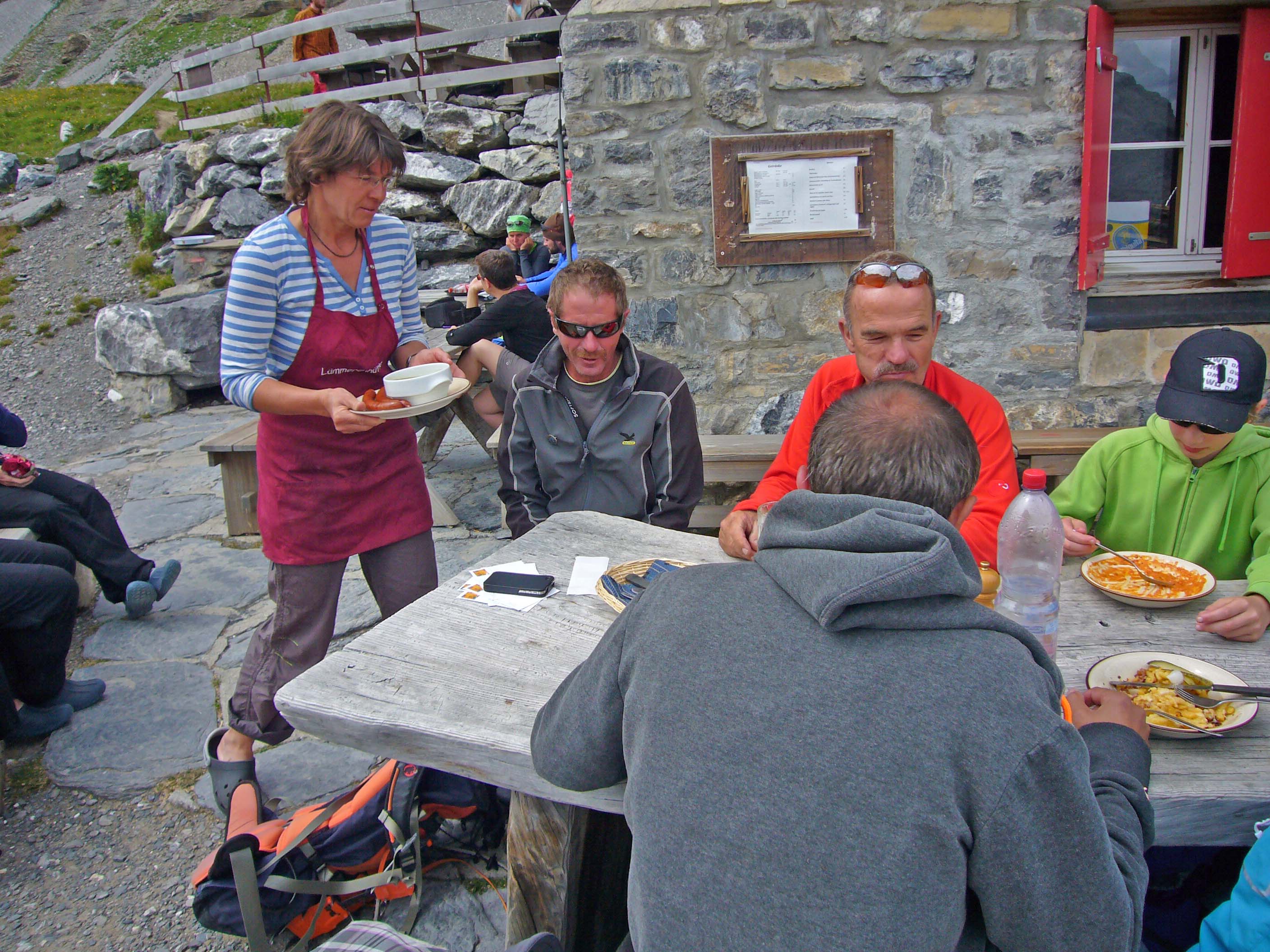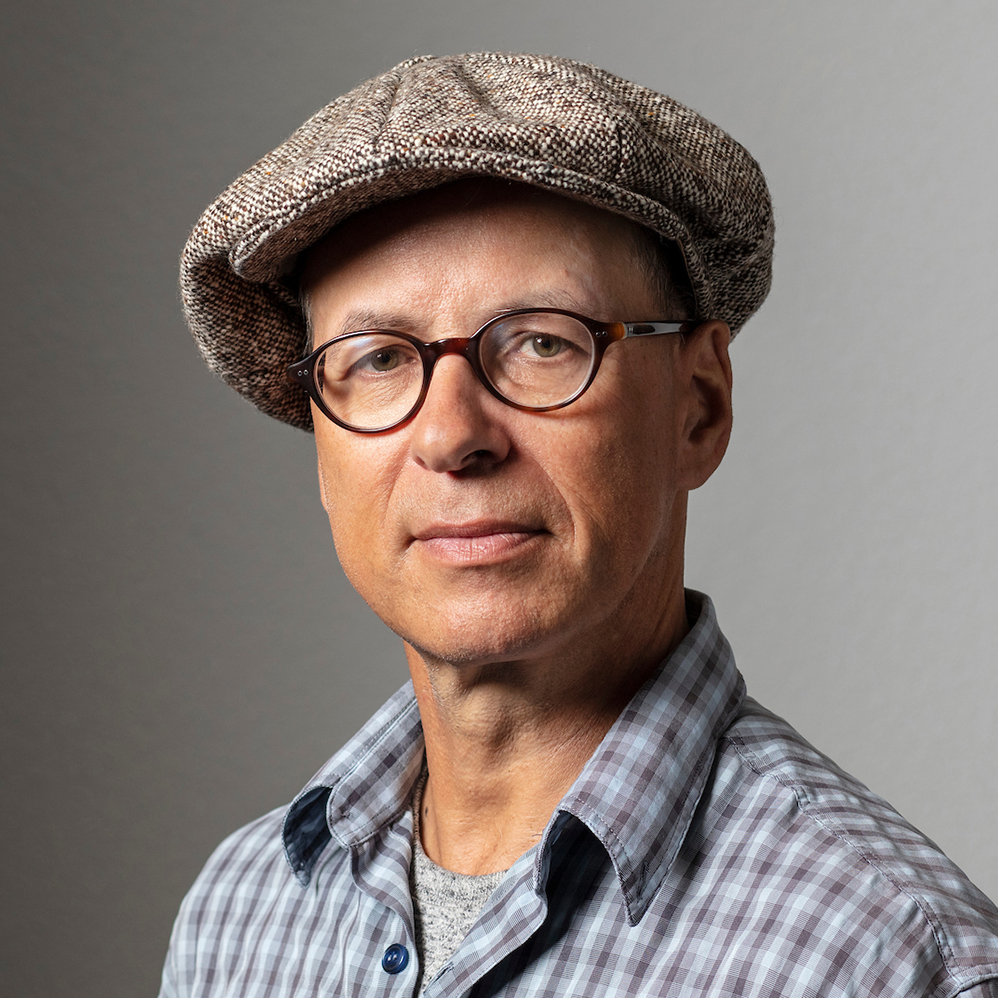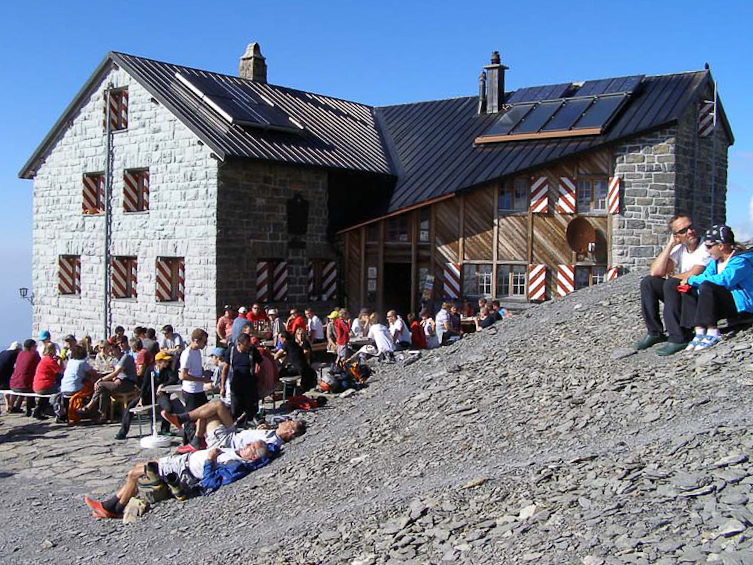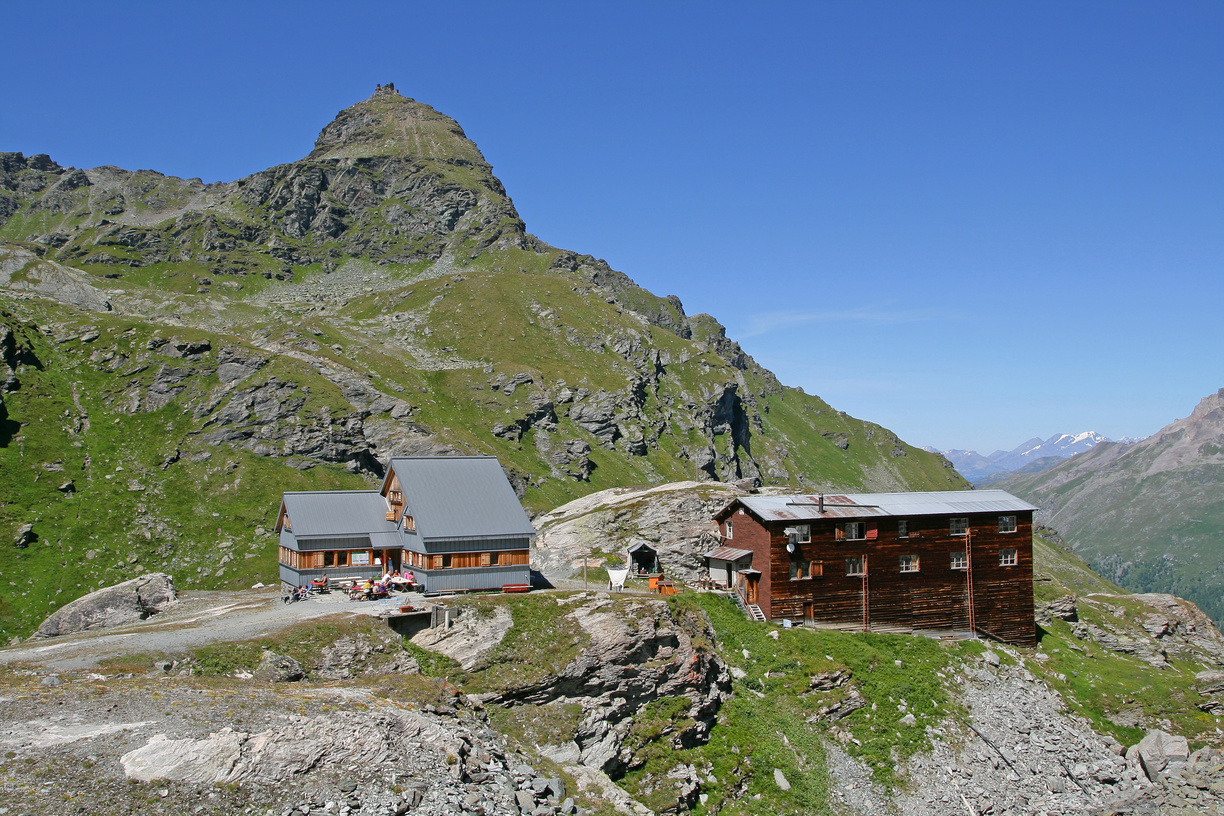Alpine idylls meet urban expectations

The Lämmeren hut is one of the most popular in Switzerland, and even counts a bearded vulture among its frequent visitors. The number of human guests welcomed by Barbara and Christian Wäfler is growing – as are their demands.
Mouth-watering smells waft into the dining area from the kitchen, where the young “hut helpers” are juggling piles of plates. Guests can fortify themselves with hearty dishes such as rösti, plates of local cheese or dried meat, or bowls of fruit-laden muesli.
Barbara Wäfler brings vegetable soup with pork sausages, which hit the spot after mountain biking up the Bernese side over the Gemmi Pass and completing the short final stage on foot.
The wooden walls are covered with photos of the majestic rulers of the skies and shots of the Lämmeren and Wildstrubel glaciers as they once were and as they are now. Information panels explain how the glaciers were formed.
Looking out of the window westwards over the puny Lämmeren glacier, one can see for oneself the dramatic consequences of global warming.
Water grumbles
Along with the soup, Wäfler brings something that has become one of the main issues concerning the day-to-day running of the hut: water.
Unlike most of the other 152 huts run by the Swiss Alpine Club (see link), for the Lämmeren hut it’s not so much the quantity but the quality of the water that’s the problem.
Since the catchment is in an open stream above the hut, it can be polluted by sheep and ibex. For this reason there are signs in the bathroom advising guests that the tap water is not drinkable.
“That sometimes leads to problems because people have the cliché in their heads that in the mountains there’s only clean spring water,” she said, adding that some object to having to pay SFr8 ($8.20) for a 1.5 litre bottle of mineral water.
“But that’s a fair price when you bear in mind that all food and drink has to be delivered here by helicopter.”
As does the massive amount of wood needed for the central oven in the kitchen.
In winter, when the almost 100 beds are full with people going ski touring, the fire is kept going round the clock – if not, water pipes and lavatories would freeze.
“Positive curiosity”
According to Roland Schuler from the environmental organisation Pro Natura, the reason more and more people are looking to spend their free time in the open air and are searching out unspoilt experiences in the Alps is that they can’t find this in the overdeveloped central plateau and increasingly developed areas in the Alps.
“The building of mountain railways, a large number of hiking paths and better quality equipment promotes this trend,” he said.
Schuler said it was “extremely welcome” that parts of the population were experiencing the mountains close up.
“That’s the only way you can feel the fascination of nature and why it’s worth protecting. But this basically positive curiosity must not be at the cost of the countryside, its flora and fauna.”
Visitors should enjoy the scenery but treat it with respect, not leave paths and not trample on protected plants, he said.
Unusual situation
Barbara Wäfler estimates one in 20 guests can’t understand the hut’s water policy. For most, however, a quick chat clears things up.
That said, some guests cause problems without even realising it.
“If a group in an eight-person bedroom takes off their bed linen in the morning, I know they mean well, but unlike the kitchen linen we can’t wash the bed linen every day,” she said.
Christian Wäfler appears having just led guests up the 3,243m Wildstrubel. In autumn he wants to climb it for the 500th time, just as the Wäflers celebrate their 20th anniversary looking after the Lämmeren hut.
He says the people who probably struggle the most are those who come just for a short time at weekends.
“Trains can get them high into the mountains within an hour. They see there aren’t any showers and the small menu – they’ve barely arrived and they decide to go again,” he said. “Today’s guests shop around and ask: has it got a steamer? Is there ice cream or Diet Coke?”
On the other hand, guests who stay for three or four days are usually aware of the hut’s unusual situation.
“By and large they adjust better and switch off,” he said.
“Role models”
The hut team’s general credo is to offer guests “good quality and a good service”. Christian Wäfler thus realises the responsibility assigned by Roland Schuler to owners of mountain huts.
“Managers of mountain huts have a sort of role model function,” Schuler said. “They are the hosts and beneficiaries of the countryside. That obliges them to provide information about why the countryside is worth protecting.”
He added that this “information obligation” also applied to mountain railways, tourism and environmental associations.
Schuler said it was the job of the authorities to mark out wild-life corridors and other protection areas. This has already happened in the Lämmeren basin, with the formative alluvial plain on the floor of the Lämmeren.
Another beneficiary of official protection is the bearded vulture, which can be seen swooping over the Lämmeren basin almost every day.
“It’s really cheeky because it often flies just five or six metres above the hut,” said Barbara Wäfler.
“We can look it right in the eye – that’s always a really special moment.”
In 1993, when the Wäflers took over the Swiss Alpine Club (SAC) hut, it had 4,800 overnight stays a year. In 2011, this had risen to more than 7,400 – putting it among the top SAC huts for overnight stays.
The hut has almost 100 beds but is still bursting. Expansion is therefore planned, which the Wäflers hope will take place in four or five years.
The hut lies on a verdant terrace on the south side of the Wildstrubel and is a sort of oasis in the alpine surroundings.
Thanks to the Leukerbad funicular (on the Valais side) on the Gemmi Pass, visitors can reach it in around 90 relatively easy minutes.
(Translated from German by Thomas Stephens)

In compliance with the JTI standards
More: SWI swissinfo.ch certified by the Journalism Trust Initiative



You can find an overview of ongoing debates with our journalists here. Please join us!
If you want to start a conversation about a topic raised in this article or want to report factual errors, email us at english@swissinfo.ch.